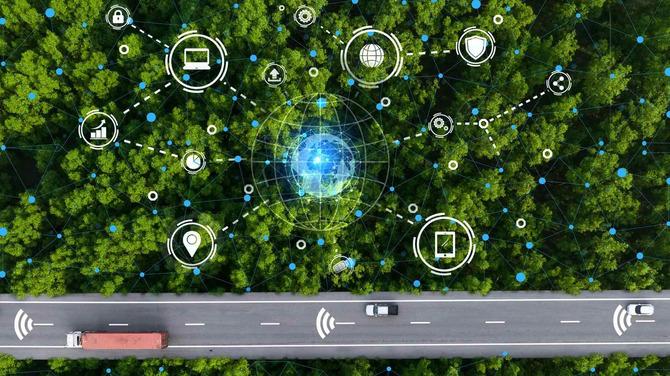The urgency of climate change has propelled innovation in how people and goods move across the globe. Traditional transportation and aviation sectors are among the highest contributors to carbon emissions, making them critical fronts in climate mitigation. The concept of Fueling the Future: Sustainable Aviation and Green Transportation in the Climate Era captures a vision where alternative energy, optimized design, and systemic change converge to decarbonize mobility. In this article, you will learn key drivers, pathways, barriers, and strategic considerations for transitioning to a cleaner transport future.
Why Sustainable Aviation and Green Transportation Matter
Aviation and transportation together constitute a significant share of global greenhouse gas emissions, often drawing scrutiny for their reliance on fossil fuels. As passenger demand and freight volumes rise, the need to decouple growth from emissions becomes more urgent. Without bold transformation, mobility’s carbon burden could overwhelm other sectors’ gains. Sustainable aviation and green transportation thus represent pivotal levers in achieving long-term climate goals.
Pathways to Cleaner Flight and Mobility
Achieving sustainable aviation and green transportation hinges on multiple interlocking pathways. In aviation, use of sustainable aviation fuels, hydrogen propulsion, hybrid electric aircraft, and advanced aerodynamics all contribute to reduced emissions per passenger kilometer. On the ground, electrification of vehicles, hydrogen fuel cell systems, biofuels, and improved modal shifts toward public transit or active mobility help shrink transport-sector emissions. Each pathway has its own maturity curve, constraints, and cost dynamics.
Technologies Enabling the Transition
Electrification technologies for cars, buses, and trucks are increasingly mature, with battery improvements boosting range and affordability. In aviation, electric and hybrid models are currently viable only for short regional routes; hydrogen or synthetic fuel solutions promise potential for mid- and long-haul flights. Innovations in lightweight materials, propulsion systems, and energy recovery systems further drive efficiency gains. Digital tools such as route optimization, predictive maintenance, and AI-driven traffic management amplify those technological advances.
Infrastructure and Energy System Integration
Technology alone is insufficient without the infrastructure to support it. Charging networks, hydrogen refueling stations, grid upgrades, energy storage, and smart charging coordination must scale in tandem with vehicle uptake. Airports will need green fuel storage, alternative energy supply, and refueling systems compatible with novel aviation fuels. Integration with renewable energy generation ensures that the electricity or hydrogen used is itself low carbon. Grid flexibility, sector coupling, storage solutions, and smart energy management become essential foundations.
Policy, Regulation, and Market Incentives
Effective policy frameworks accelerate adoption of sustainable aviation and green transportation. Carbon pricing, emissions standards, incentives for clean technology, and mandates for sustainable fuel blending push markets toward lower carbon solutions. Governments can support R&D and infrastructure rollout. Public procurement policies, low-emission zones, and subsidies help reduce barriers to adoption. International coordination is especially important in aviation, where routes cross multiple jurisdictions and carbon accounting must be coherent.
Operational Strategies and Business Models
Industry players must rethink operations and business models to align with lower carbon mobility. Airlines and transport operators can adopt fleet renewal, scheduling optimization, load factor improvements, and route redesign. They might enter partnerships with energy providers or invest directly in clean fuel production. Subscription mobility, vehicle-as-a-service models, and sharing platforms help reduce total fleet footprint. Corporations that source clean travel, incentivize low-carbon commuting, and integrate transport sustainability into procurement choices strengthen their climate credentials.
Challenges and Risks Along the Way
Major obstacles remain in scaling sustainable aviation and green transportation. Technology readiness for long-distance flight remains limited, and high costs pose economic challenges. Infrastructure deployment lags demand, and ensuring that the energy sources are low carbon is not trivial. Supply chain constraints for critical materials, public acceptance, regulatory fragmentation, and uncertainty in carbon pricing all add complexity. Strategic alignment, financing risk, and coordination across multiple stakeholders become essential to manage those risks.
For More Info https://bi-journal.com/fueling-the-future-sustainable-aviation-and-green-transportation-in-the-climate-era/
Conclusion
The vision of Fueling the Future: Sustainable Aviation and Green Transportation in the Climate Era is not just aspirational—it is increasingly actionable. With advances in propulsion, fuels, energy infrastructure, and policy frameworks, the mobility sector is poised for transformation. While challenges remain, stakeholders who act decisively stand to reap resilience, competitive advantage, and climate alignment. A future of low-carbon flight and transport is within reach—and building it demands commitment, innovation, and system thinking.

